How to Grill Thick-Cut Pork Chops
Has this summer already been as grill-heavy for you as it has been for us? We’ve taken every chance to cook on the grill rather than heating our kitchens to unlivable temperatures. But in all of the excitement of the first few summer cooks, surely you have not forgotten the humble pork chop, have you?
I say humble, but there is nothing small or meek about big, juicy pork chops. Pork chops take well to all kinds of seasonings and flavor combinations and are far cheaper than even cheaper steak cuts. To demonstrate their versatility, today we’re going to discuss how to cook massively-thick double-cut pork chops on the grill.
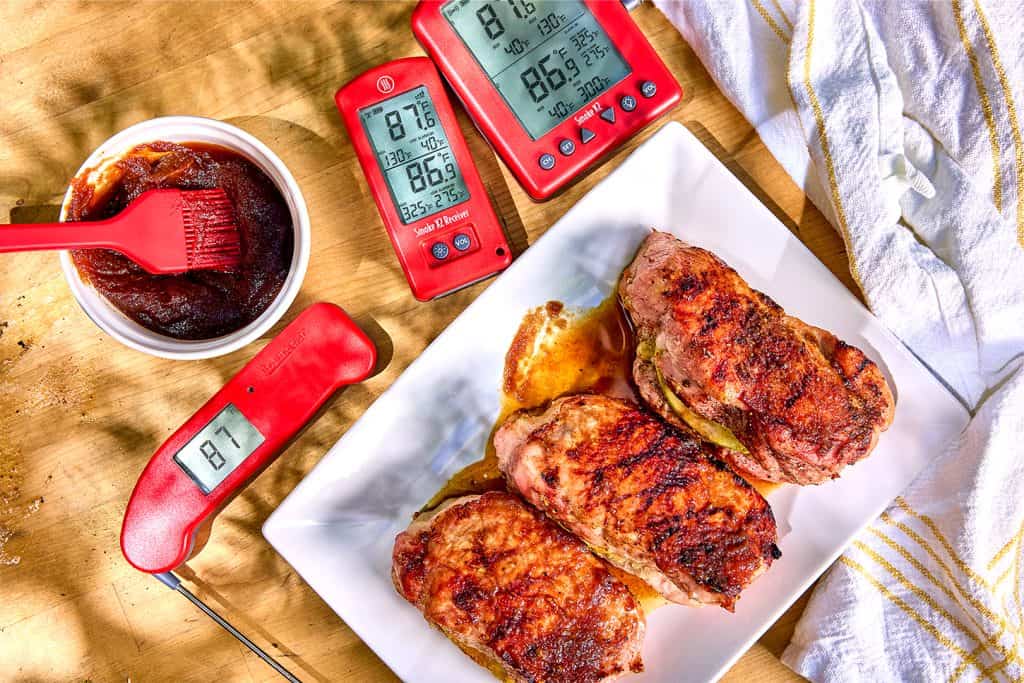
Contents:
- Grilling pork chops: thermal basics
- Best pork chop temps
- Grilling thick pork chops
- Grilled thick cut pork chop recipe
Get the gear you need for this cook here:
How to grill pork chops
Thermal basics of grilling pork chops
Pork chops come from the pork loin, the pork equivalent of the beef rib eye. If you don’t see much resemblance, it’s because American pork is bred to be exceedingly lean, eliminating all the fatty marbling that you see in a rib eye. If you can manage to find a heritage-breed pork chop, not only are you in for a treat, but you’ll see that it looks like a much smaller rib eye steak.
So what do the leanness and location have to do with the thermal principles of grilling a pork chop? Everything. First, note that the loin is a little-used muscle on the hog, and will, therefore, have little connective tissue. Cooking pork chops is nothing like cooking pork butt or pork steaks that come from the shoulder because you don’t need to dissolve any collagen to tenderize the meat. That means you can cook them relatively quickly.
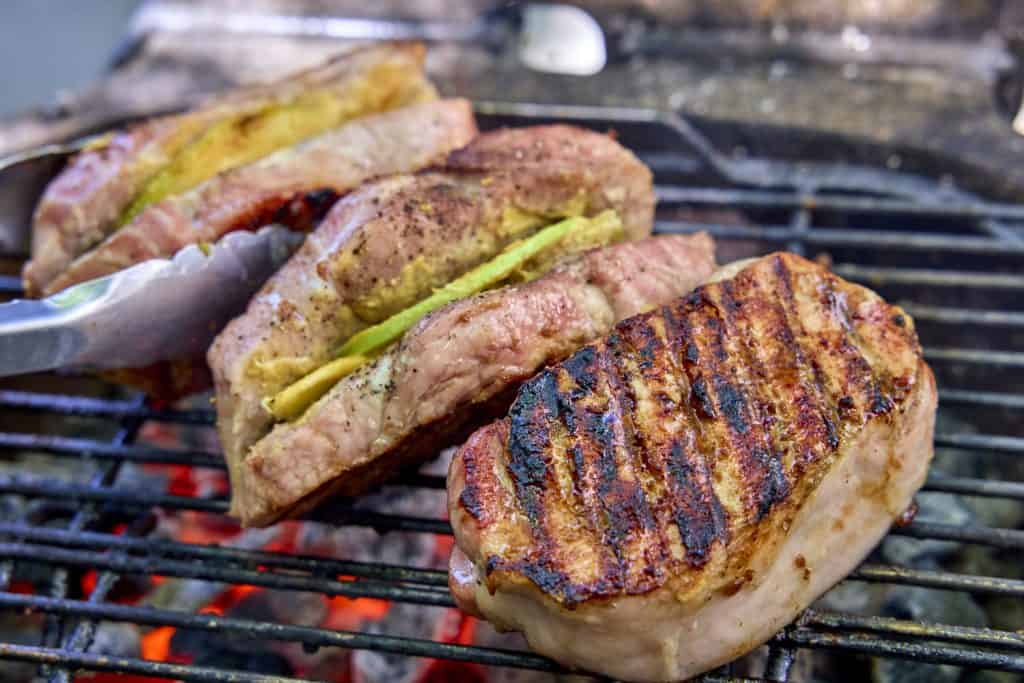
But the leanness coupled with the lack of connective tissue means that there is not “moisture reserve” in the meat if you overcook it. This makes it even more critical that you hit your target temperatures, or you may be eating dry pork that will have you reaching for the jar of applesauce in your cupboard.
At about 120°F (49°C) the muscle fibers in the meat begin to denature, making the meat more firm and opaque. The little fat that there is in the meat begins to render at about 130°F (54°C). Once the temperature of muscle fibers reaches 150°F (66°C) they shrink, becoming even more firm, and start rapidly expelling moisture. It’s important for the pork to reach 145°F (63°C) to develop the proper texture with the muscle fibers and fat and to be safe to eat, but really no higher. Stay away from the higher temperature ranges that will leave the pork irreversibly tough and dry. Remember, in an overcooked pork chop, there is no fat to compensate for how the muscle fibers have squeezed out all their water, and there is no gelatin waiting to appear to re-introduce liquid to the meat.
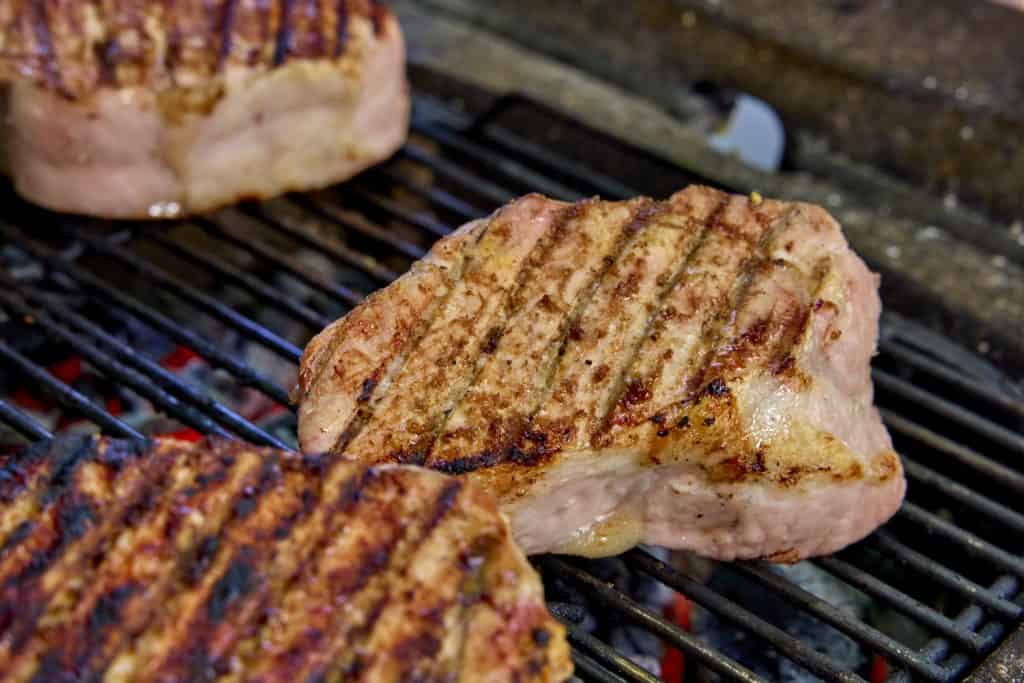
Pork chop temp
The need to keep pork chops from overcooking brings us to two key points: target temperature and temperature monitoring. Some years ago, the USDA changed their recommended doneness temperature for safe pork from 160°F (71°C) to 145°F (63°C)—a full 15°F (8°C) lower, and the world rejoiced.
What does that difference mean? It means you can safely cook pork to a doneness that is delicious rather than desiccated. To reach the target temperature, remember to account for carry-over cooking and have a pull-temperature that is about 140°F (60°C), depending on cooking method and the size of your chops.
…a chop can lose up to 30% of its moisture when cooked to 150°F [66°C] or higher.”
J. Kenji Lopez-Alt, SeriousEats.com
(To learn more about pork doneness, look at our post on the new USDA temp recommendations for pork!)
To make sure you get those temperatures right, you have to monitor them. And to do that, you need a high-speed, accurate thermometer like the Thermapen ONE that can keep up with the changing temperature in the very center of your pork chop. And for the grill-roasting you’ll be doing if you cook very thick chops, a Smoke dual-channel thermometer—or another leave-in probe thermometer—with an alarm can help you know exactly what your chops are doing under the lid of the grill.
Grilling thick pork chops
In order to cook a thick chop to the proper temperature, you can’t just throw it on a high-heat grill. By the time the internal temp reaches 140°F (60°C) for your pull temp, the entire outside of the chop will be overcooked, dry, tough, and chewy. Large cuts (like the two-inch thick cuts we use in this recipe based on one from the James Beard Foundation) need a slightly slower, slightly longer cooking time. That’s where grill roasting comes in. Grill-roasting is accomplished with a two-zone fire, with one side of the grill very hot and the other without any heat.
Grill-roasting is accomplished with a two-zone fire, with one side of the grill very hot and the other without any heat.
It looks like this:
Place the chops in the indirect-heat zone, which should be in the range of about 350°F (177°C), and cook them until they reach 130°F (54°C). When the alarm on your Smoke sounds, move them to the hot side for just a minute or two to sear a few tasty grill marks onto the surface. With a Thermapen ONE, verify that their internal temperature has reached 140°F (60°C) and no higher before removing them from heat to rest. This method yields juicy, tender pork chops that will leave a lasting impression, especially on those that have eaten overcooked pork their whole lives. Toss in a few grilled fresh fruits or vegetables, and you have a dinner that celebrates the whole of summer.
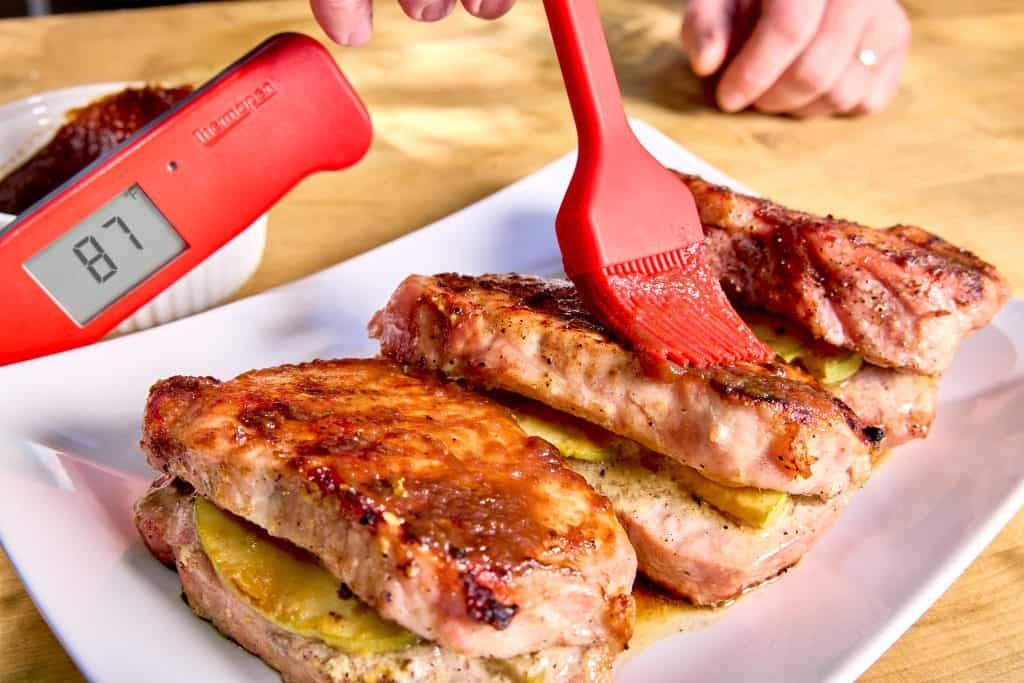
Pork chops are every bit as deserving of your grilling attention as the best of steaks. Try this recipe this weekend and surprise yourself how tasty pork can be if you keep to those critical temperatures and use your Thermapen ONE and Smoke X to keep your chops safe and delicious.
Print
How to Grill Thick-Cut Pork Chops
Description
Thick cut pork chops with apples, mustard, and apple butter. The mustard powder in this gives a somewhat potent bite!
Ingredients
-
- 2 Two-inch thick pork chops (bone in or boneless)
- 1 Granny Smith apple
- 1 Tbsp ground mustard
- 3 Tbsp apple butter
- Coarse salt
- Black pepper
Instructions
- Set up your grill for indirect cooking.
- Slice the apple so that the slices are ⅛-¼” thick. You will need 4-6 slices.
- Butterfly your pork chops by cutting almost all the way through, leaving ½” uncut. (Your butcher can do this for you if you don’t want to.)
- Salt and pepper the inside of the cuts.
- Dip the slices in the ground mustard and place them inside the cut pork chops.
- Close and season the pork chops.
- Place the chops on the grill in the indirect-heat zone.
- Insert a probe into the thickest part of the chop, so that its tip is in the thermal center. (We pushed the optional 2.5” Pro-Series® needle probe through the apples and into just into the chop on the other side.)
- Attach the probe to your Smoke X and set the high-alarm for 130°F (54°C).
- Close the lid and cook the chops.
- When your Smoke X alarm sounds, remove the probe and move the chops to the hot side of the grill.
- Brush the chops with a little of the apple butter. (Don’t lay it on too thick! It should caramelize but not be caked on.)
- Monitor the internal temperature of the pork chops by inserting your Thermapen ONE deep into the meat and drawing it up through, looking for the lowest temperature.
- When each of your chops individually reaches 140°F (60°C) in the thermal center, remove it from the heat to a tray.
- Let the pork chops rest for a few minutes.
- Serve the pork chops with some apple butter that wasn’t used for basting. Enjoy!


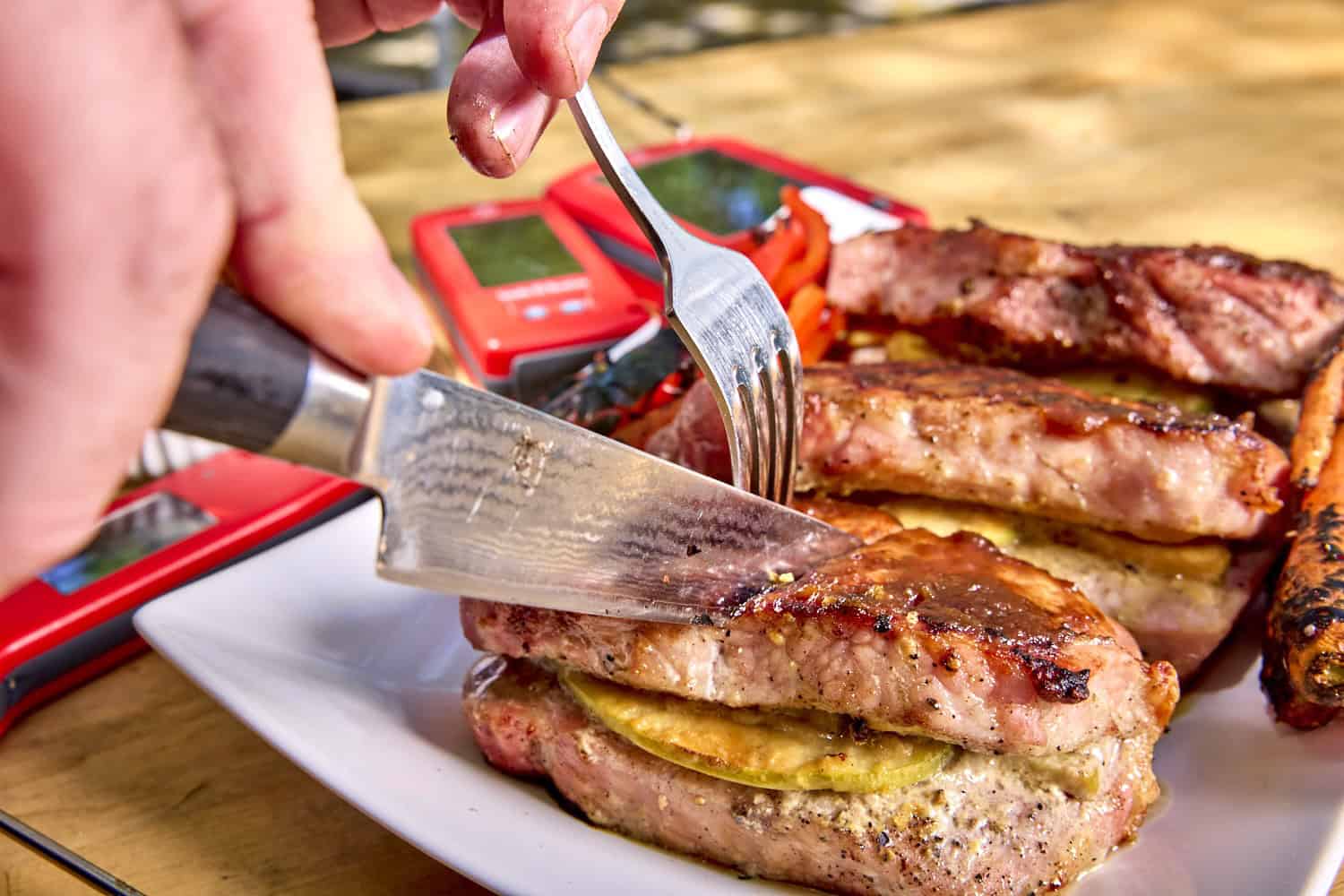
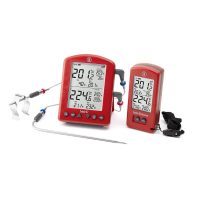
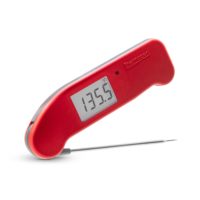
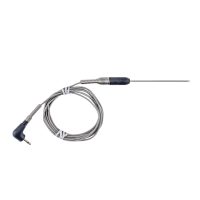
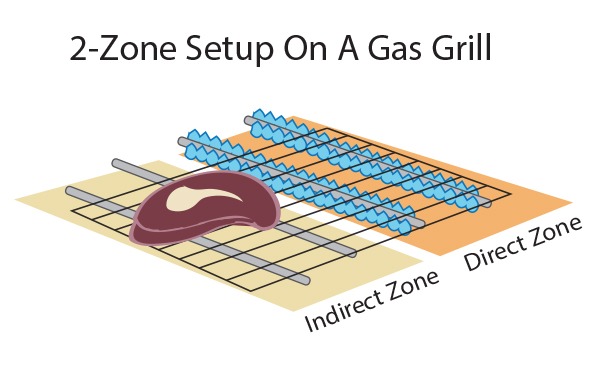
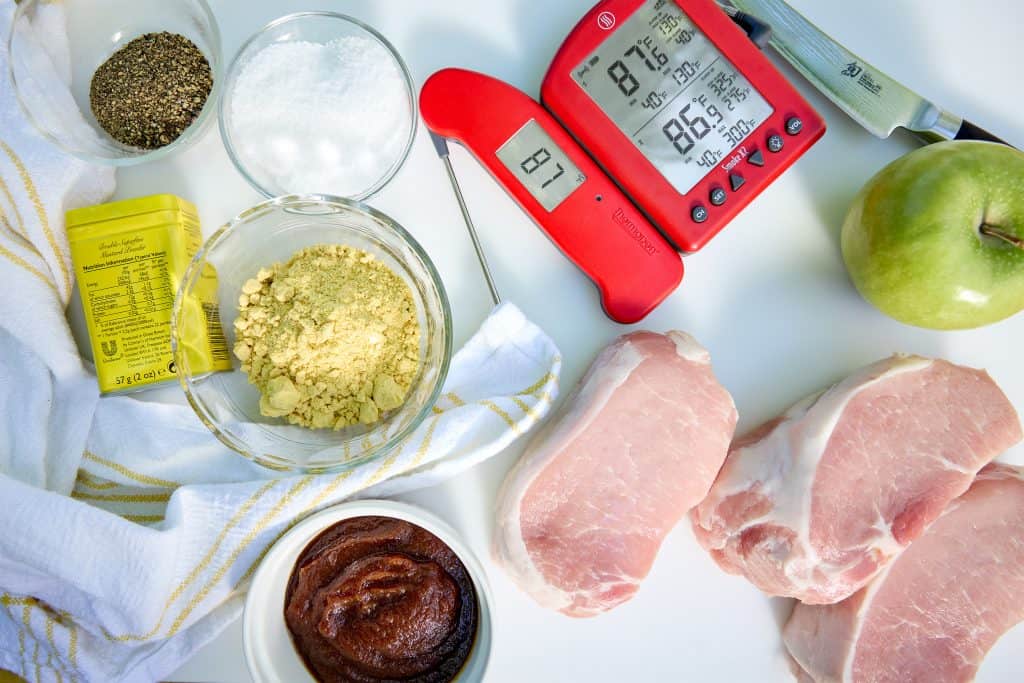
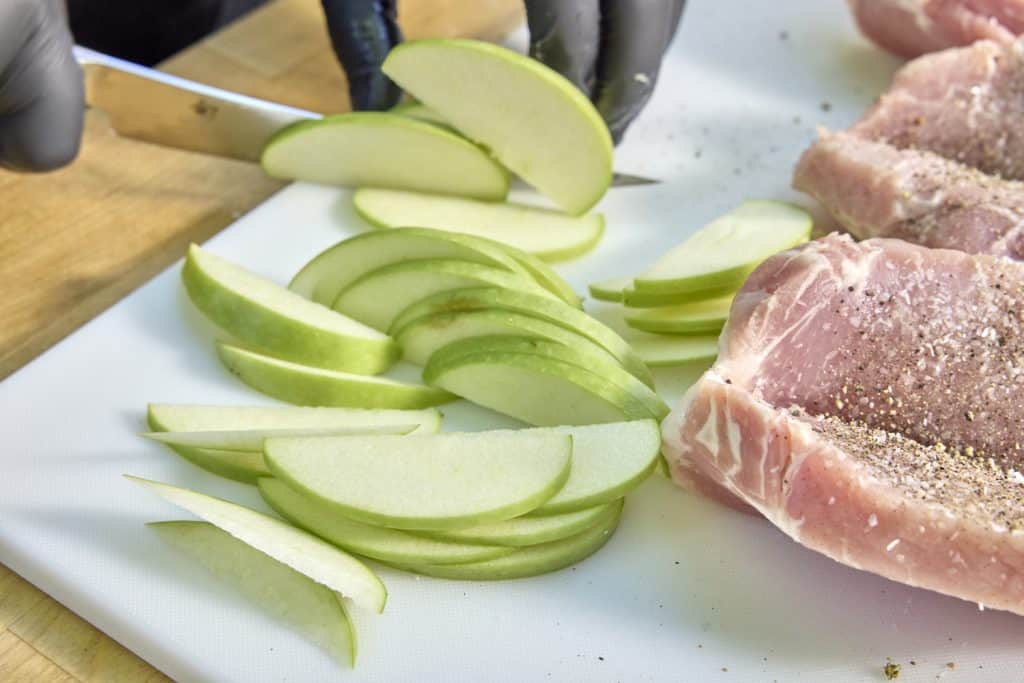
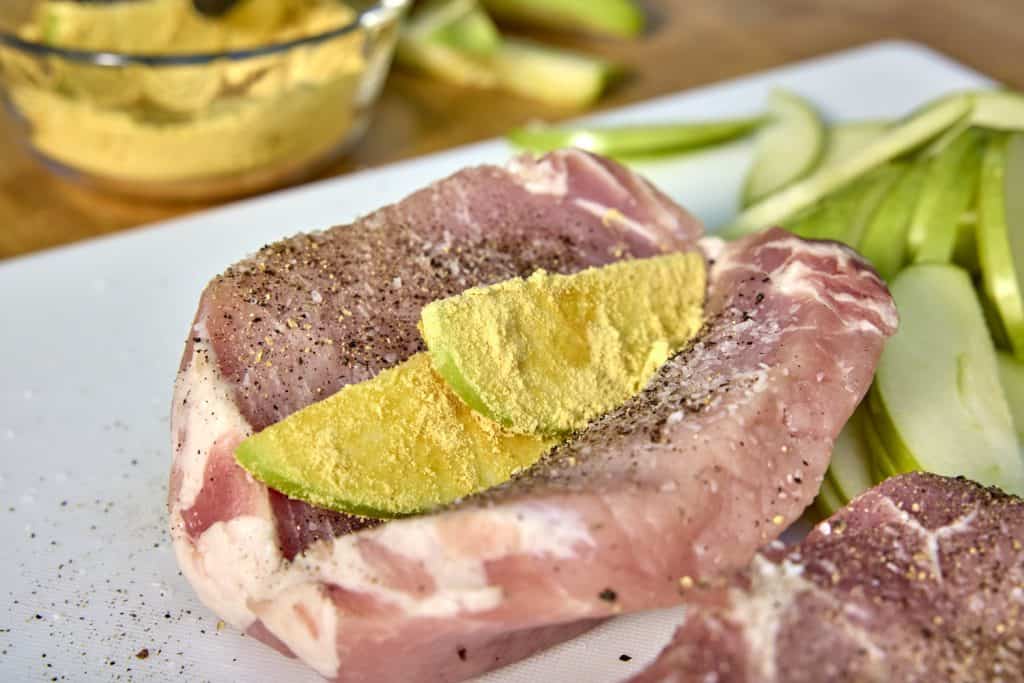
This website makes me hungry; What’s your number 1 tip for grilling? Regards
Use a thermometer, of course! But seriously, season your meat appropriately and don’t be too anxious to get done. Good food takes time! Use temperature to make sure it’s actually done right!
I have found that braising pork chops in an applesauce/juice/BBQ sauce after seasoning with salt and pepper and a quick sear results in very tender and juicy chops after a few hours.
The next to last step in the recipe reads: “Let the pork chops rest for a few minutes. while the apricots finish cooking. They should get dark grill marks that are made of caramelized/burnt honey and apricot sugars.”
The ingredients and preparation instructions do not mention using apricots. Assume the fresh apricots are cut in half, pitted, and brushed with honey? Direct cooking used?
Sorry, that’s a relic form a previous version of the recipe. It called for brushing halved apricots in honey and grilling them face-down to serve alongside the pork. It’s a nice accompaniment!
Just made these, my daughter said that she didn’t realize that pork chops could be this good!!